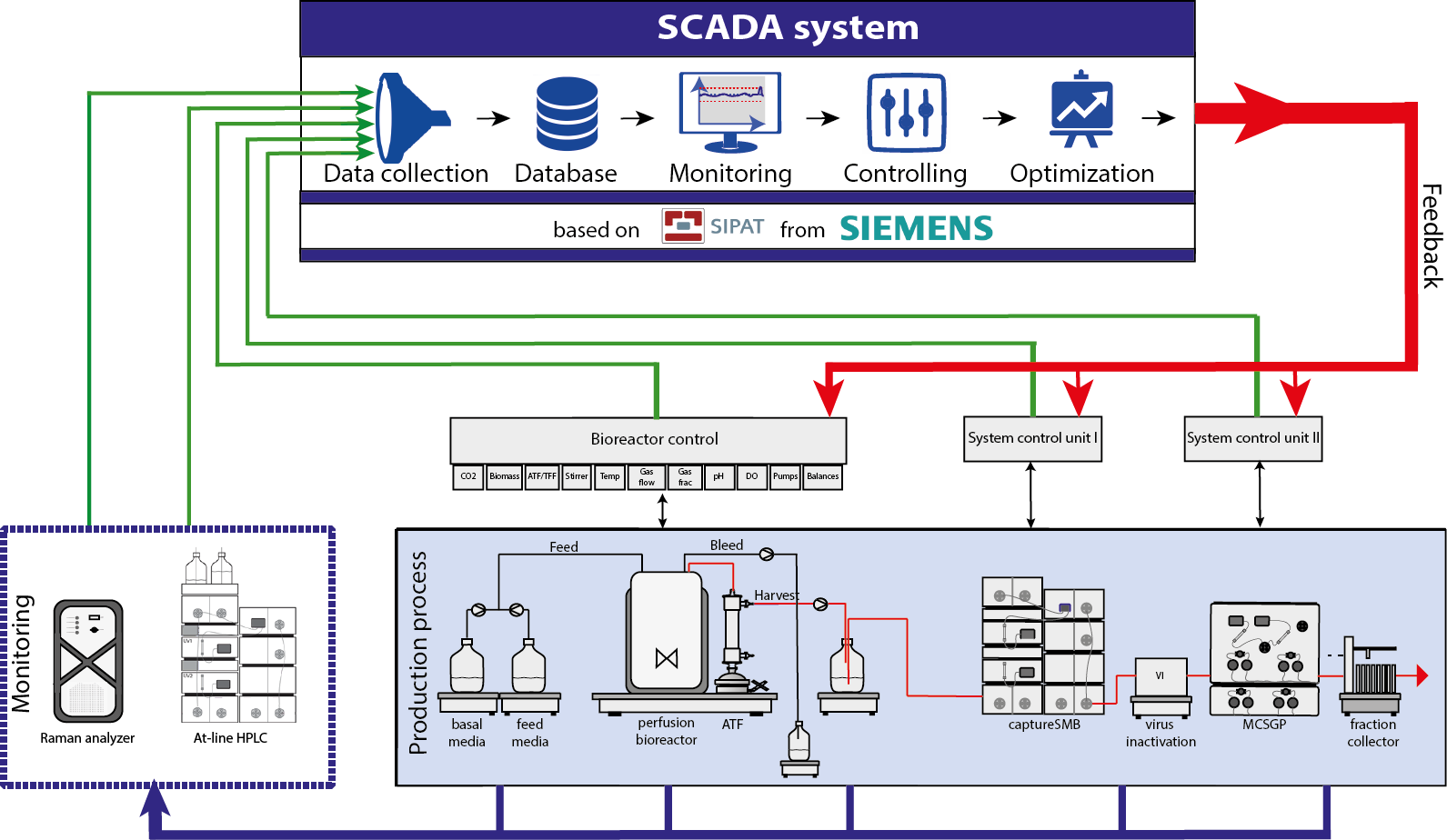Development of a supervisory control and data acquisition system for an integrated continuous biomanufacturing process based on modern process analyzers

The implementation of process analytical technology (PAT) is gaining more and more importance and, in the future, it will be crucial to show that PAT is correctly applied to the process in order to ensure product quality. In most cases, PAT implementation is limited to highly advanced monitoring tools and to the collection of large amount of data, i.e. to a passive role. However, PAT can be described as a holistic approach, which starts by using new monitoring technologies, merging and organizing all generated data, analyzing and evaluate them and use the conclusions to supervise, control and optimize the process. This is the final objective of this interdisciplinary project.
The research activity can be divided into three major areas:
1.) The development of an IT platform, which communicates with the different process units and fulfills major GMP criteria. This will be very important to enable the real-time consolidation of all data to a central database. The IT platform will be not only for the collection and storing the data, it will also include analysis and evaluation tools. Monitoring, analysis and displaying tools will be developed, in collaboration with SIEMENS.
2.) The development and evaluation of monitoring tools. Besides standard monitoring tools such as pH, conductivity, temp and flow rates, sophisticated online sensors will be included. Raman spectroscopy is very promising for this purpose, since it is very sensitive to changes in composition of the system; it is not influenced by the presence of water; it allows the detection of many species inside the system, including the product, several key nutrients and cell density and viability; it is little invasive; it gathers data online and can be used in different steps of the process. To this regard, the work will also focus on the development of the statistical models required for data acquisition from Raman spectra and how the accuracy of these models can be quickly refined by optimally planning test conditions or by spiking experiments.
3.) The integration of the online tools for monitoring process conditions and implementation of advanced multivariate models for the monitoring, analysis and control of the integrated continuous biomanufacturing process. A combination of multivariate data analysis tools, statistics and mechanistic models will enable the effective use of the big data and change the system contribution from monitoring to fully controlling the process as fast as possible. It is important to notice that the main objective of this work is not to have a classical cascade of control tools, which are simply responding to changes upstream in the process. By such statistical tools, the process will be analyzed as a whole, therefore extending feedback control to upstream units. For example, if correlations are found between conditions in the perfusion step (high pH, high temperature, high lactate) and undesirable conditions in one of the purification steps (aggregates, fragments, HCPs…), the controller will act on the purification step so to ensure quality despite of the perturbation in the system, while acting at the same time on the perfusion step to reduce or avoid these conditions. The definition of such inter-step correlation goes in the direction of actively designing quality in the system and to increase process robustness and goes fully in line with the recommendations of the Food and Drug Administration.
Contact person: Fabian Feidl